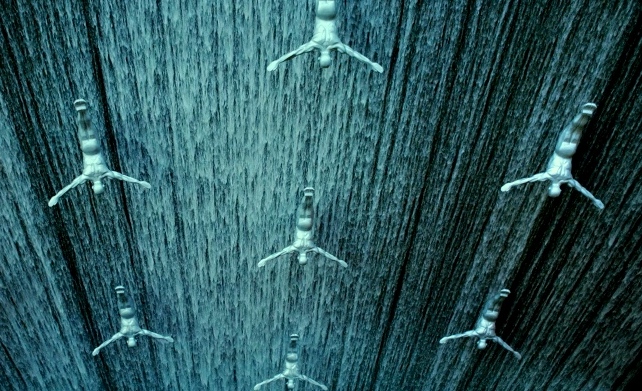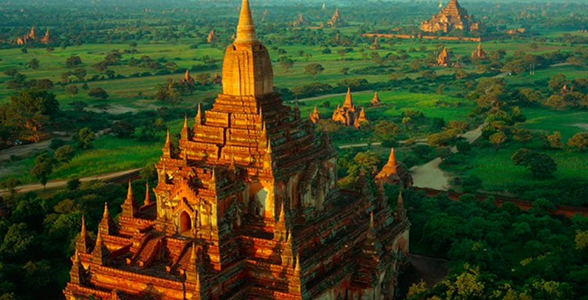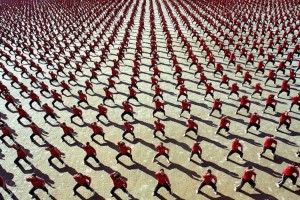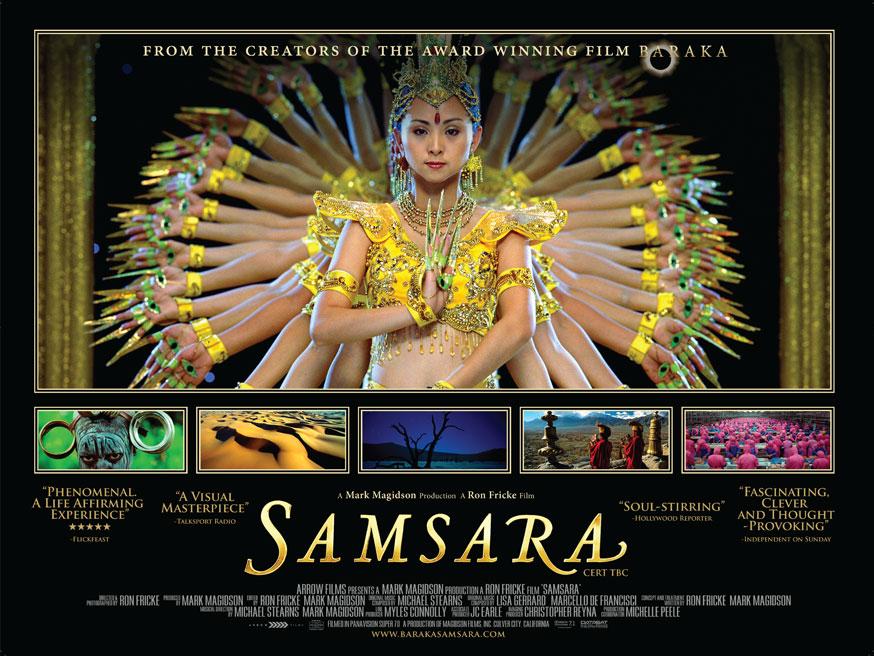
Meditative wordless documentary filmed over five years spread over twenty-five countries. Samsara is simply made by a great man named Ron Fricke. If you dislike his films, it must be because you’re jealous you haven’t been to as many places as he’s been. But likely, you haven’t seen a single one of his movies yet. He hasn’t made one since 1992’s “Baraka” which is a necessary companion to this new one. I imagine he spent the other 15 years simply prepping for the five years he spent on this one.
That’s a major reason to see “Samsara” right there, pondering the likelihood that a man spent twenty years making a single film. Most of us never make anything of such magnitude, let alone conceive it. Some of the images are of such baffling strangeness that they take moments to decipher. I saw a Japanese performance artist turn from businessman to ghoul. I saw the largest pig I’ve ever seen within a film, for instance, although it was within the horrors of a meat factory. The rest is full of images we are only mildly familiar with.
 The Buddhist temples of Ladakh and the observance of sand painting, the prayers at the holy city of Mecca in Saudi Arabia, the Cathedrals of France, the prison dances in the Philippines, the assembly lines at Chinese factories, the sulfur mines of Indonesia. There is no plot, but the underlying theme is the pressing of globalization on the corners of the world where indigenous people and ancient traditions still at least for now prosper.
The Buddhist temples of Ladakh and the observance of sand painting, the prayers at the holy city of Mecca in Saudi Arabia, the Cathedrals of France, the prison dances in the Philippines, the assembly lines at Chinese factories, the sulfur mines of Indonesia. There is no plot, but the underlying theme is the pressing of globalization on the corners of the world where indigenous people and ancient traditions still at least for now prosper.
The time lapse / eco-wonder documentary trend began with 1983’s Godfrey Reggio’s “Koyaanisqatsi,” for which Fricke served as cinematographer. Reggio went on to make the companion piece “Powaqqatsi,” while Fricke made “Chronos” and “Baraka.” These movies blow your mind with their hypnotic thrust and exotic spectacle. That kind of sensory stream of consciousness is something you might have experienced with parts of Darren Aronofsky’s “The Fountain” (2006) or “The Tree of Life” (2011).
 Foolishly, the common complaint of Fricke’s films are that they “don’t tell you anything about the image and where it was filmed.” These are moron critics attempting to be too clever by half – they don’t have anything beautiful to say, so instead of constructing poetic interpretation in their reviews they compose their words with twaddle grievances. I don’t want to know everything about Fricke’s scenes. If they were stopped to be explained, the entire movie would lose its hypnotic trancelike power. The end credits tell you where he shot the film. However, if Fricke ever makes another movie, perhaps he could solve this problem by recapping crucial shots in the main credits with stamp headlines on them.
Foolishly, the common complaint of Fricke’s films are that they “don’t tell you anything about the image and where it was filmed.” These are moron critics attempting to be too clever by half – they don’t have anything beautiful to say, so instead of constructing poetic interpretation in their reviews they compose their words with twaddle grievances. I don’t want to know everything about Fricke’s scenes. If they were stopped to be explained, the entire movie would lose its hypnotic trancelike power. The end credits tell you where he shot the film. However, if Fricke ever makes another movie, perhaps he could solve this problem by recapping crucial shots in the main credits with stamp headlines on them.
For long stretches, my head takes on vertiginous shapes while gasping “Wow.” It’s humbling to be reminded I don’t know everything there is to know about the Earth. I have years ahead of me to ask around the guys and gals I know whom have seen Fricke’s work, to have dialogue on what we saw, what we know, and what we’re spellbound by will thereby commence perpetually.
102 Minutes. Rated PG-13.
DOCUMENTARY / SCENIC LOCALES / HEIGHTENED AWARENESS ANYTIME
Film Cousins: “Koyaanisqatsi” (1983); “Chronos” (1985); “Powaqqatsi” (1988); “Baraka” (1992).





